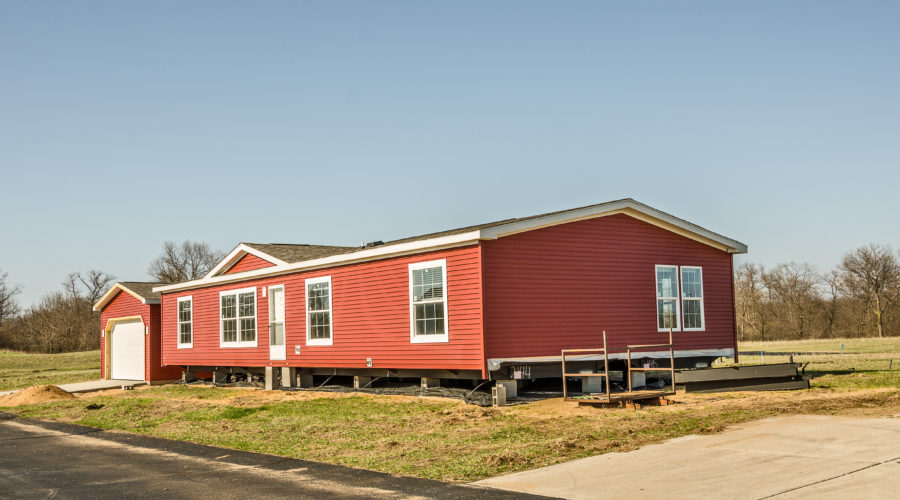Double wide manufactured homes, as the name implies, are twice as wide as single-wide homes. Builders construct double-wide homes in two or more sections at a factory. They transport each section separately to the home site and join them there. The double-wide design creates a larger floor plan than a single-wide. It often looks like a traditional site-built home. Sizes vary, but most double-wide homes range from 1,000 to 2,500 square feet. This offers much more space than a single-section home.
These homes can have multiple bedrooms and bathrooms, large kitchens, and separate dining and living areas. Some models include walk-in closets or utility rooms. Homeowners can customize parts of the design. Many models allow choices for finishes, fixtures, and even some layout changes.
Benefits of Double Wide Manufactured Homes
Double-wide manufactured homes offer a number of benefits that make them a popular choice for many homebuyers. Here are some of the key benefits:
Affordability: Double-wide manufactured homes are typically less expensive per square foot than traditional site-built homes. This can make homeownership more accessible to people who might not be able to afford a traditional home.
Size and Layout: Double-wide homes offer significantly more living space than single-wide manufactured homes. The added width allows for a layout that is closer to that of a traditional home, with separated living spaces and larger bedrooms and bathrooms.
Customizability: Many manufacturers offer a range of customization options, allowing you to choose different floor plans, finishes, fixtures, and features to suit your needs and personal style.
Speed of Construction: Because they’re built in a factory, double-wide homes can be constructed much more quickly than a site-built home. There’s also no delay due to weather, as the construction process takes place indoors.
Quality Control: Factory construction allows for a controlled environment, which can lead to better build quality with consistent construction processes and inspections before the home leaves the factory.
Energy Efficiency: Many modern manufactured homes are designed to be energy-efficient, which can save you money on utilities in the long term. Some may even be designed to meet ENERGY STAR standards.
Reduced Impact on Site: Since most of the construction happens off-site, there’s less disruption and damage to the home site compared to traditional construction.
For families or those who need more living space, a Double Wide is a great option for a manufactured home you can live in for many years to come.
Regulations for Double Wide Manufactured Homes
Like all manufactured homes, double wides must meet the standards outlined in the federal HUD Code. Because they are larger and offer more amenities than single-wides, double-wides are generally more expensive, but they are still often more affordable than a comparable site-built home.
Double wide manufactured homes, like all manufactured homes, are subject to regulations outlined by the U.S. Department of Housing and Urban Development (HUD). This is known as the HUD Code, which became effective on June 15, 1976. The HUD Code is a national standard and preempts state and local construction laws.
The HUD Code regulates
This code regulates several aspects of manufactured homes. It covers design and construction, including structural integrity, fire resistance, energy efficiency, and durability, ensuring the home can withstand transport. The HUD Code sets standards for transportability. Homes must meet size limits and include proper towing connections to travel on roads. While the HUD Code doesn’t directly regulate installation, it does require manufacturers to provide detailed instructions. Some states, like Ohio, have their own rules. The code also sets performance standards for heating, plumbing, air conditioning, thermal, and electrical systems. Each home must have a data plate attached permanently. This plate lists key details about the unit and its construction.
In addition to the HUD Code, manufactured homes may also be subject to other local regulations, including zoning laws, building codes, and land use regulations. This can impact where the home can be placed and how it can be used.
In Ohio, the Ohio Manufactured Homes Commission (OMHC) is responsible for the regulation of manufactured home installations. Installers must be licensed by the OMHC and follow the standards set forth by the state, which include specific requirements for site preparation, foundation construction, home installation, utility connections, and other elements of the setup process.
The OMHC has established a set of installation standards based on the federal Model Manufactured Home Installation Standards, as well as any additional requirements needed to ensure the health and safety of residents.
Ready to Buy a Double Wide Manufactured Home?
Speak with a Green Valley agent today to learn more about our beautiful
double wide floor plans and how you can move into a new home quickly and cost-effectively!




